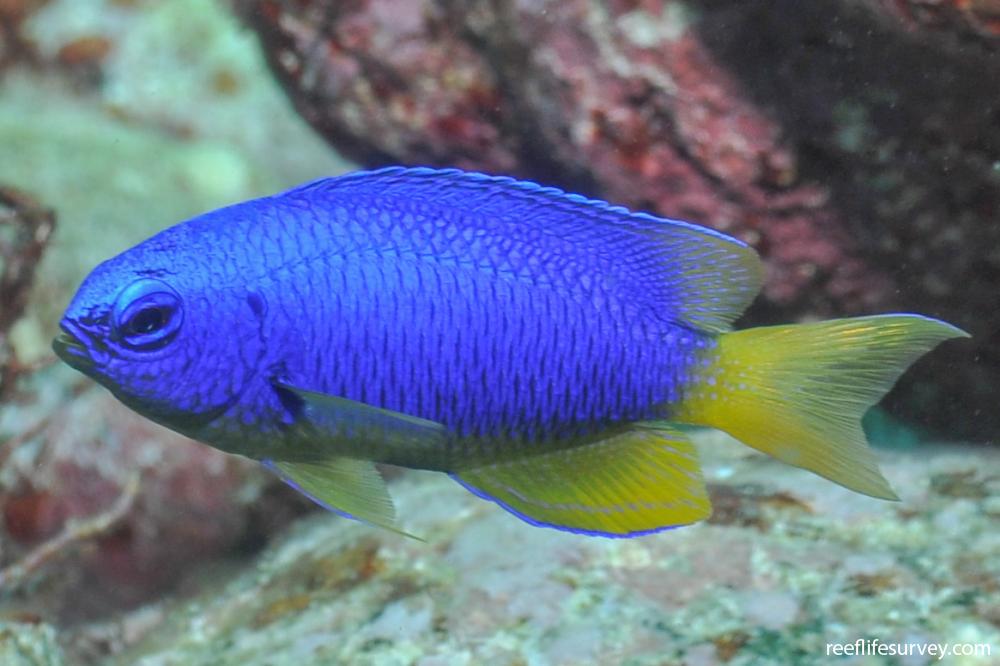Pomacentrus coelestis
Neon damsel | Blue Damsel | Common Blue DamselSimilar Species
Same Genus
Distribution
Tropical Indo-Pacific
Description
Iridescent blue with yellow tail and part of underside. P. auriventris (Goldbelly Damsel) has yellow underside from pectoral fin to tail. Common in shallow depths.
Information
Max Size: 9 cm
Sea Temperature Range: 16.1-31.2°C
Depth: 1-20m
Habitat Generalization Index: 23.2
Also referred to as the SGI (Species Generalisation Index), this describes the habitat niche breadth of the species. Species with values less than 15 are found in a relatively narrow range of reef habitat types (specialists), while those over 25 may be found on most hard substrates within their range (generalists). Learn more here.
Conservation and Rarity
IUCN Status: Not Evaluated
Occurrence: Common (30.9% of sites)
Occurrence describes how often the species is found on surveys within its distribution. It is calculated as the % of reef sites surveyed by RLS divers across all the ecoregions in which the species has been observed
Abundance: Many (68 per transect)
Abundance is calculated as the average number of individuals recorded per RLS transect, where present.
















































![Pomacentrus sp. [rhodonotus]](https://images.reeflifesurvey.com/0/species_f2_58d8856ad74db.w400.h266.jpg)





